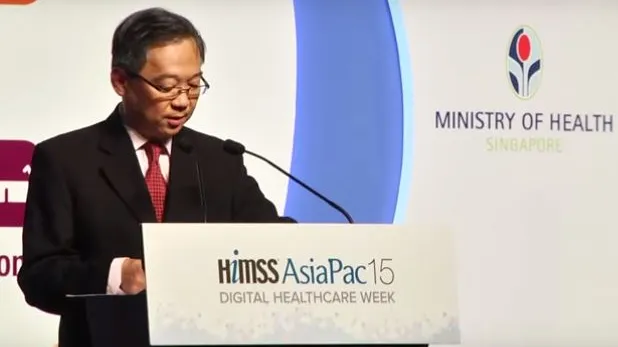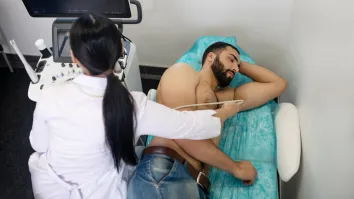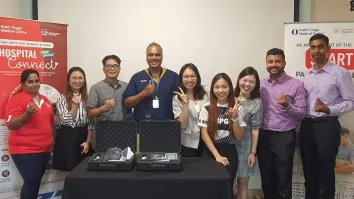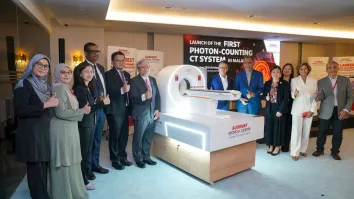
Keeping up with the big guys: Healthcare IT takes the limelight in Asia
In today’s highly digitised world, keeping up is not enough for healthcare firms to remain relevant.
They must be highly innovative and competent, and must constantly outdo each other in catering to a rapidly growing demand for healthcare--most especially in the case of Asia Pacific’s healthcare sector where a big chunk of the market is just slowly starting to fully embrace technologies.
Singapore is among the Asian countries who are at the forefront of healthcare innovation as its ambition of building the world’s first SMART Nation is currently underway. What would be the challenges in making this a reality? Will other developed countries like Japan, South Korea, and India follow suit soon after, and when will developing countries make their markets penetrable to this technology? This and more were fleshed out at the HIMSS AsiaPac15 Digital Healthcare Week held from 6 to 10 September at the Marina Bay Sands. Currently on its fourth consecutive year in Singapore, HIMSS kicked off the conference under the theme “Smart Healthcare - Transforming how we manage Health.”
Exhibition space at HIMSS was sold out and this year’s conference saw the number of exhibitors and sponsors hitting 92, while the number of healthcare leaders and professionals from 38 countries hit 1,767.
In his opening speech, Mr Gan Kim Yong, Singapore’s Minister for Health, says that Singapore is dead set on making healthcare more proactive for both its people and healthcare providers. “In Singapore, we are aspiring to become a Smart Nation and Smart Health is an important element of our agenda. We seek to identify opportunities for effective use of information technology to deliver beneficial citizen centric healthcare services. Our focus is on ideas and solutions which will address the needs for both our people and our care providers,” he adds.
Singapore, of course, is not alone in its healthcare IT initiative as speakers and exhibitors from peer countries shared their journeys in pushing for a healthcare sector that’s accessible to all. For instance, Richard Royle, executive director at UnitingCare Health, talks about their launch of a new 96-bed fully integrated digital hospital in Australia. Through a Health and Hospitals Fund (HHF) grant in 2011, the Australian Federal Government provided $47 million funding for the $96 million project, including $21 million for the eHealth component.
Dr. James S. Miser, Chief Medical Information Officer at Bumrungrad International Hospital, also shares how having a robust, learning, cognitive computing decision support system that organizes patient data, collects and curates the relevant medical literature, and provides expert treatment recommendations will be critical especially in Thailand to deliver the highest quality treatment in the molecular age.
For Japan, Sakiko Ota, project researcher at The University of Tokyo, discusses about her team’s project that developed a digital-enabled infrastructure of community care for enhancing inter-professional work. The authors interviewed healthcare providers and official caregivers about the usability of the system and inter-professional work. It is hoped the data will show the future direction of inter-professional work on community care.
Telehealth was also a key buzzword in HIMSS AsiaPac 2015 as Dipl. Ing Christoph Westerteicher, Business Director Philips Hospital to Home International, Philips Healthcare Global shares that telehealth has been proven effective by numerous pilots in reducing healthcare cost and hospitalizations. However, he says, a few telehealth programs have delivered on its promise beyond pilot to achieve the scale required for a broader population. What are the challenges healthcare providers, patients, payers have experienced? And what are the key lessons learnt for telehealth to deliver on its promises? These are few of the questions he tackled in his talk.
The overall discussion on healthcare IT will of course be incomplete without touching on the topic of big data. Lim Cher Wee, Deputy Director, Corporate Planning, Tan Tock Seng Hospital, discusses the hospital’s Healthcare Intelligence (HI) - an enterprise level business intelligence system that translates data from clinical and administration-related databases into meaningful information. Francis Fan, Group Director, Technology Management, Integrated Health Information Systems (IHiS), talks about the importance of implementing a more reliable and resilient IT cloud platform that is capable of providing better data protection, high resiliency and quick delivery of IT services when they needed.
It has been a whirlwind week of healthcare IT at HIMSS, and Stephen Lieber, President & CEO, HIMSS says at the event closing, “We at HIMSS hope that we provide the opportunities for you to see what the solutions are so you can take them back to your hospitals, to your countries, and find ways to implement them for the betterment of our citizens' health.”
HIMSS Asia Pacific 2016 will be held in Bangkok, Thailand in August and will revolve around advancing digital and patient-centered care.



















 Advertise
Advertise





